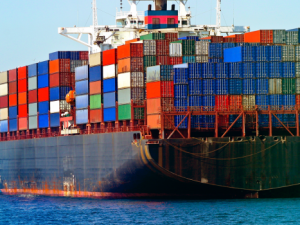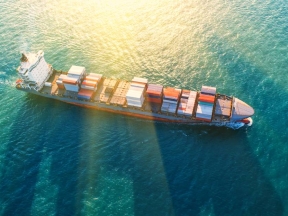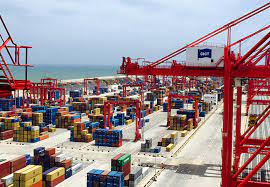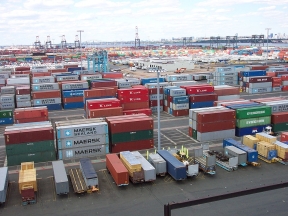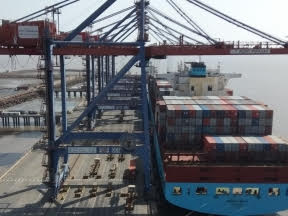The Government of India explores a proposal to extend tax and other incentives to draw large players to set up shipping lines in India and provide aid to the exporters grappling with global container shortage and exorbitant freight costs. Likely to be announced in the upcoming Budget for 2022-23, subject to the finance ministry’s concurrence, the different initiatives are currently undergoing deliberation from ministries of commerce and shipping. It is learned that some officials are studying the attractive Ireland model of taxation for shipping firms. On finalization of a proposal, the ministries will seek the approval of the finance ministry. In the past year and a half, the Indian shipping industry in the wake of the pandemic has mirrored the global trend resulting in doubling the Shipping costs of Indian exporters to most destinations. The state-run Shipping Corporation of India (SCI) that caters for less than 5% of the roughly USD100-billion domestic market, has barely been able to keep the cost curve in orderly evolution. In light of this, the government has now put the SCI on the block for sale.
Read More »Continental Carriers transports break bulk cargo to Chittagong
Continental Carriers Pvt Ltd Chennai Ocean Team handled Break Bulk Project and shipped cargo of 195 Pkgs/366 Tons/908 CBM, Pol Chennai Pod Chittagong, on 25th December’ 2021. CCPL team obtained special permissions on X’mas holiday to complete the clearance activities. Continental Carriers (P) Limited is committed to finding innovative solutions and partnering with customer’s enabling them to find faster and better solutions to meet their requirements
Read More »Shipping giants prepare to go green along vital corridors
Shipping accounts for two to three per cent of global greenhouse gas emissions so manufacturers and retailers are no longer just considering what appears in national targets. Even though individual governments are not on the hook for these supply chain emissions, some of Australia’s largest companies are getting ready. BHP is the world’s largest charterer of ships, which means marine emissions are a problem for future profits and reputation. Rio Tinto is in the same boat as iron ore makes up a third of Australian exports. They have lined up a small number of LNG-fuelled bulk carriers as an immediate solution to lower emissions. Some say green ammonia made with hydrogen, using a water electrolysis process powered by solar and wind energy, could become the marine fuel of choice one day. Nuclear power could also be a clean but more expensive and currently illegal source of electricity for producing hydrogen and ammonia through electrolysis. Australia will still be shipping almost $100 billion a year in coal and gas by 2050, according to federal government modelling.
Read More »CICT records a throughput of 3.1 million teus in 2021
Colombo International Container Terminals (CICT) ended 2021 on a high note by achieving the milestone of 3 million teus within a year for the first time. The company’s throughput for the full year was expected to reach approximately 3.1 million teus by December 31 representing a healthy increase of around 11 percent over 2020. Notably, CICT achieved its first one million teus milestone in just eight months, from January to August 2015 and ended that year with 1.56 million teus. The company handled two million teus in a single year for the first time in 2016. It recorded incremental increases in annual throughput thereafter, handling 2.38 million teus in 2017, 2.67 million teus in 2018, 2.9 million teus in 2019 and 2.89 million teus in 2020. The Company, which manages the Colombo South Terminal, commenced construction of the terminal in December 2011 and began port operations in 2013. The volume handled by the terminal has grown five-fold since then. “We are delighted to have played the role expected of us with flying colours in our first decade as an integral part of the Port of Colombo,” CICT CEO Jack Huang said. “We have been a significant contributor to the port’s throughput by attracting vessels which would otherwise have bypassed Colombo because of the absence of a deep-water terminal. CICT is also proud to have led the way in promoting eco-friendly operations and innovations in service.”
Read More »Container shortage leading to break-bulk shipping
There has been an all-out fight for freight ever since the recommencement of the staggering economy amid the pandemic and a boom in online buying. Obtaining shipping containers for moving coffee has been heavy on the pockets in the best scenario while in the worst, containers have been unobtainable, only adding fuel to the prices. It is believed that in the future, roasters are more likely to start utilizing old-school shipping without containers. To solve the long plaguing shipping bottlenecks, many shippers are adjusting to this new shipping modality, despite the complexity. Handling of bags instead of containers is much harder, from the inland transportation in the origin to the reception at the destination, as only a handful of the ports are equipped to lift the bags from a vessel’s hold. A first of its kind in over 20 years, a break-bulk vessel named Eagle has found its way from Lampung in Sumatra, through the Mediterranean, and is now headed for New Orleans, transporting robusta coffee bags stacked in its hold to the U.S., garnering a lot of attention. The ship-part of a burgeoning experiment is a hope for the industry where producers, roasters, and traders are looking to leapfrog a global container shortage that’s causing an unprecedented backlog of shipments.
Read More »Container shipping rates rise globally as restocking boosts demand
The all-inclusive trans-Pacific container shipping rates to North America stayed afloat in the week to Dec. 17 by a renewed push to restock retail inventories in the period between the calendar year-end and Asia’s Lunar New Year celebrations beginning Feb. 1, which will curb factory and transport operations. August-September-peak season approach to the holiday shopping season saw more acceptance of premium service fees in addition to ocean freight rates by the shippers as compared in the week to Dec 17. Sources said that some shippers were shopping around the market for the best rates or deferring cargoes until after Lunar New Year, where possible. But demand has increased from a lull in October-November and Asian export hubs have come face to face with a growing shortage of empty equipment as the holiday import rush places more equipment out of position. As carriers impose General Rate Increases with expectations of higher demand, the premium rates for Southeast Asia-to-North America cargoes have seen a hike this week.
Read More »APM Terminals Pipavav & PRCL offer double stack rail service to Jodhpur
APM Terminals, Pipavav in collaboration with Pipavav Railway Corporation Limited (PRCL), is now going offer double stack rail service to Jodhpur via Sanand on a hub & spoke model, which will further provide access to other ICDs in India. The service is managed by PRCL, the joint venture between Gujarat Pipavav Port Ltd. and Indian Railways, the first such service by PRCL. Customer centricity is at the core of all our initiatives. The rail connection to Jodhpur via Sanand on hub and spoke model will give an edge to our customers in connecting to their markets/ICDs quickly. We extend all our support to the PRCL to make this connection big success.” Jakob Friis Sorenson, APM Terminals Pipavav The hub & spoke arrangement via Sanand will ensure timely evacuation from the port in lesser dwell time there by swift movement of the cargoe for the customers. The initiative is likely to help the trade to connect with their markets quickly and competitively.
Read More »“India aims to increase its supply chain efficiency and lower logistics costs”
“To accomplish the goal of becoming a $5 trillion economy by 2025, India is aiming to increase its supply chain efficiency and lower logistics costs”, said Sarbananda Sonowal Minister for Ports, Shipping, Waterways and Ayush. In a virtual address at the CII Partnership Summit 2021, the minister said that India has one of the largest supply chain and logistics sectors in the world growing at a fast pace. An efficient logistics ecosystem is thought to be a catalyst for improving the competitiveness of all sectors of the economy. Ensuring the coordinated and accelerated growth of India’s maritime sector in the next decade with the objective of propelling India to the forefront of the Global Maritime Sector, the shipping ministry has prepared a blueprint – Maritime India Vision 2030 (MIV 2030). The minister said, MIV 2030 has identified initiatives such as developing world-class mega ports, transshipment hubs and infrastructure modernization of ports.
Read More »Indian merchandise export to touch $400 billion this fiscal
“Indian merchandise export to touch an all-time high of $400 billion during the current financial year, driven by sharp uptick in shipments” said Commerce and Industry Minister Piyush Goyal. As per a preliminary trade data, India’s merchandise exports in April-November 2021 were at $262.46 billion, an increase of 50.71 per cent over $174.15 billion in the same period of the previous financial year. “Our exports have consistently crossed $30 billion for the last eight months. We are now at about $262 billion of exports versus $290 billion in the 12 months of last year. So, by the ninth month, we would have crossed last year’s export, and we hope to do a record export of $400 billion,” Goyal said. While speaking at CII Partnership Summit 2021, Goyal also mentioned that a growth is also been observed in India’s imports, thus opening a plethora of opportunities for other countries to expand business and international trade with India. Imports during April-November 2021, grew by 75.39 per cent to $384.44 billion.
Read More »Berthing delays spike up export container dwell times globally
The visibility platform company for shippers and logistics service providers project44 has analysed data for supply chain, indicating that berthing delays are causing a huge build-up of export containers within port terminals and creating a big spike in container dwell times globally. “Berthing delay is defined as the time it takes a ship between its arrival at anchorage until the time it is berthed to commence cargo operations. If there is a queue of ships waiting for a berth, the ships wait at anchorage until it is their turn to berth,” explains the company. According to the latest data from project44, export containers at the Port of Los Angeles took an average of 11.85 days to be loaded on a ship between October and November 2021 while its twin Port of Long Beach took an average of 10.98 days. With export containers taking about twice as long to move through US West Coast ports as import containers, project44 analysts claim that the problem appears to be getting containers off of docks and onto ships.
Read More » Cargo Breaking News
Cargo Breaking News
